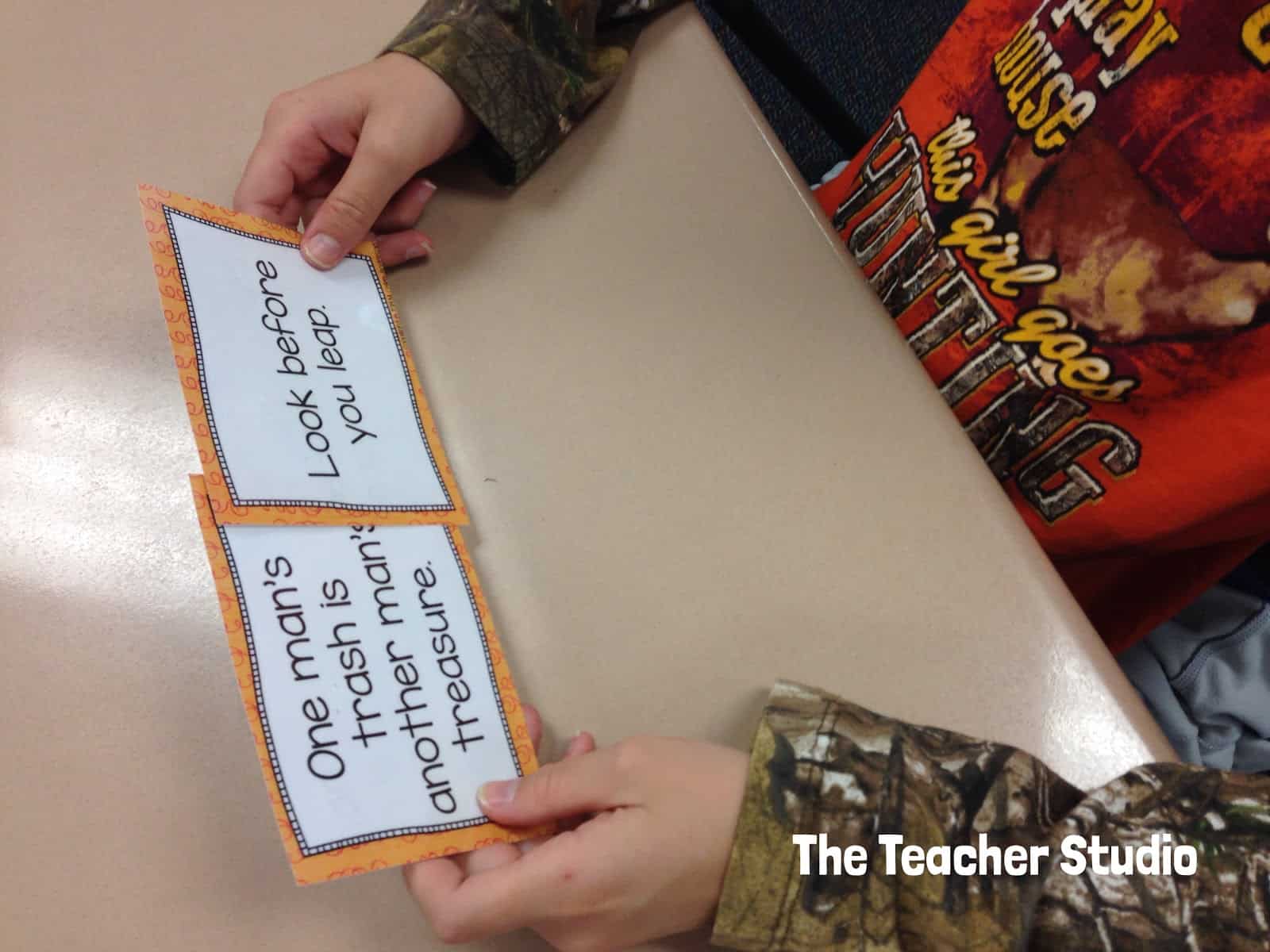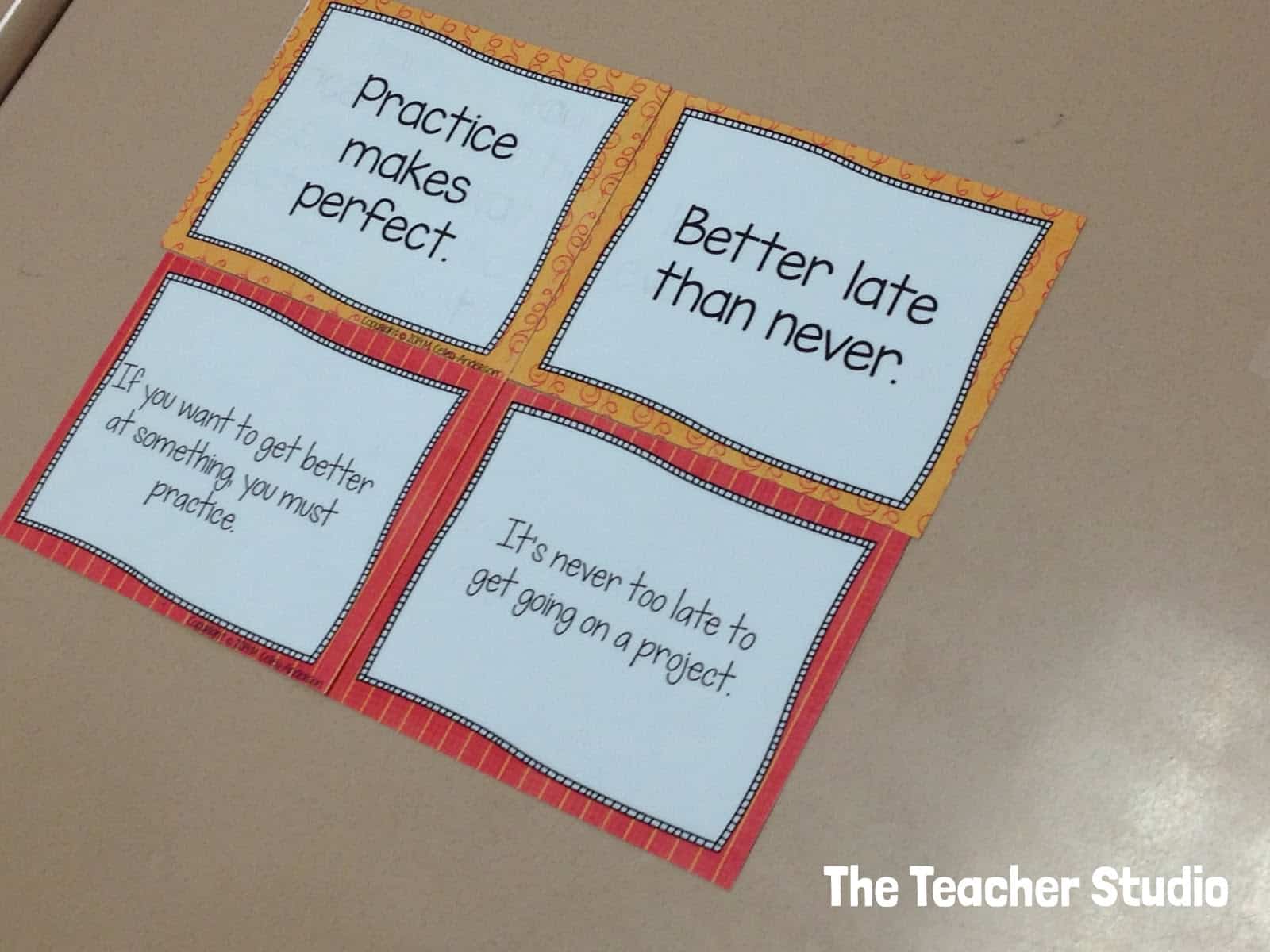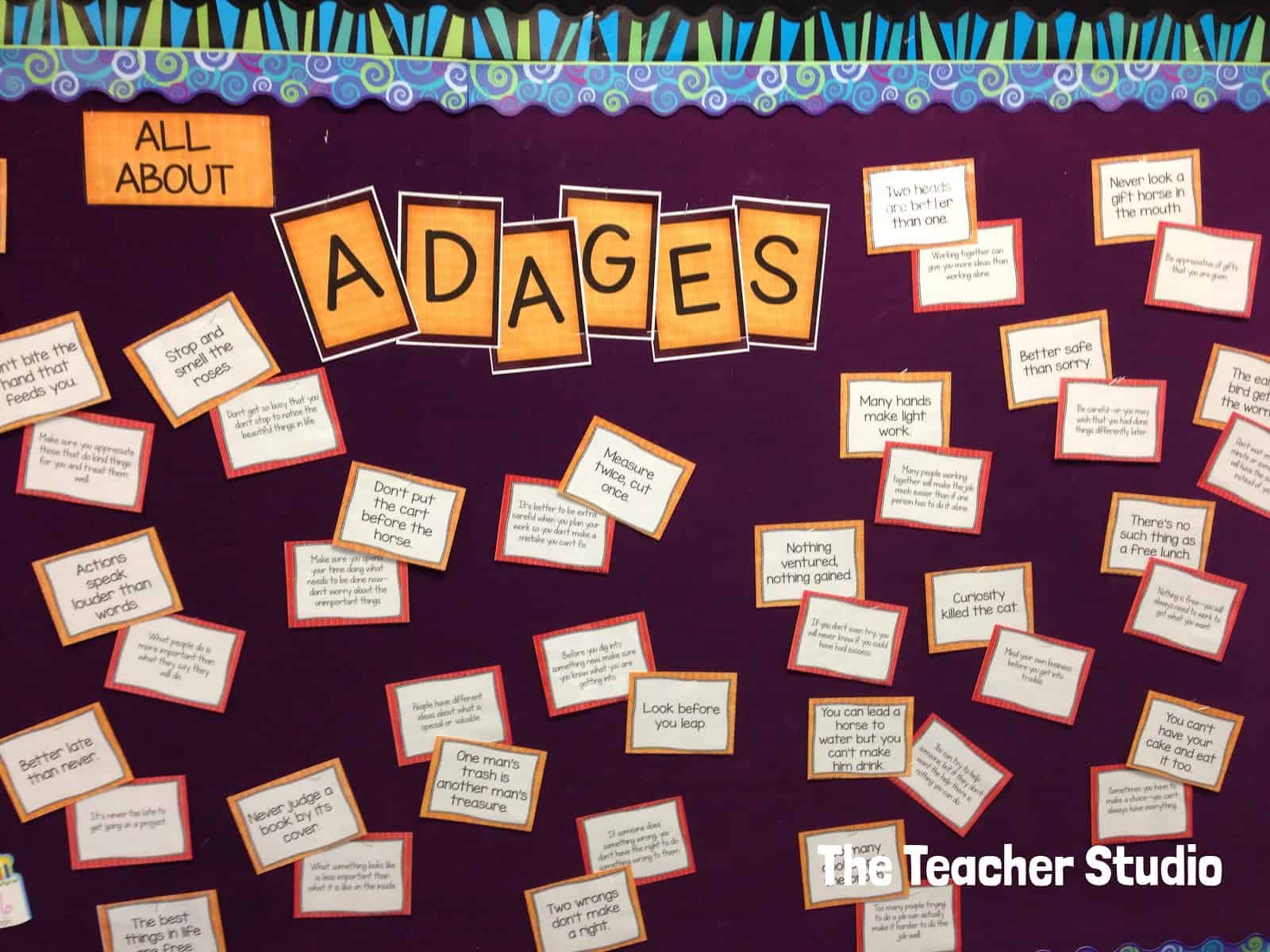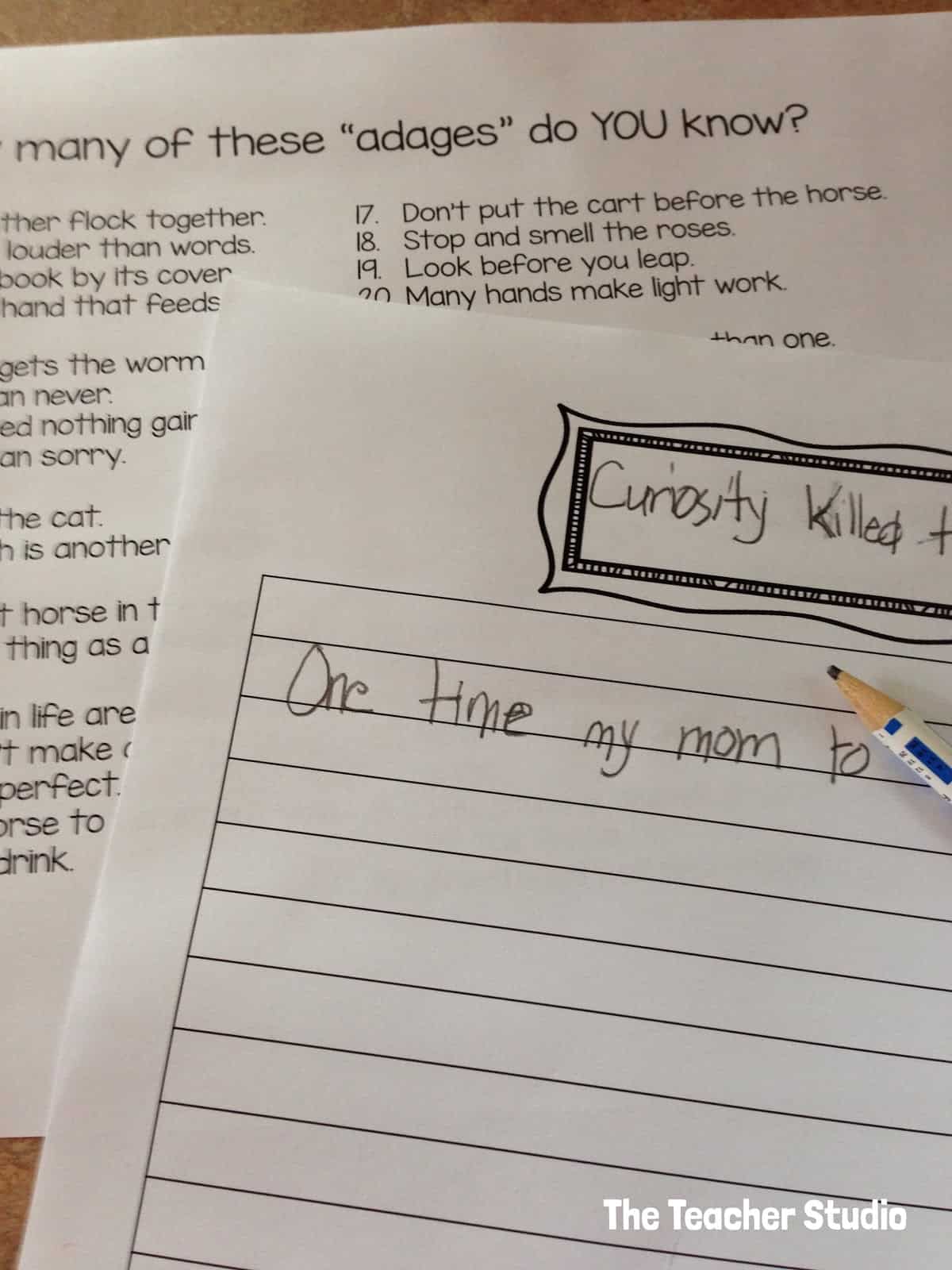An adage is a form of figurative language
that consists of a short phrase or proverb that teaches a life lesson or speaks
a general “truth”. It is a saying that
has been passed down over time and is generally recognizable in meaning. Students who have not been exposed to this
type of language at home or school may not understand when they come across
such phrases in their daily lives or in their reading. This is a concept covered in the CCSS, and it is one that I didn’t do justice last year. I am not a huge believer in teaching skills out of context, so I tried to highlight adages whenever we encountered them, but I realized I simply didn’t give my students enough exposure.
that consists of a short phrase or proverb that teaches a life lesson or speaks
a general “truth”. It is a saying that
has been passed down over time and is generally recognizable in meaning. Students who have not been exposed to this
type of language at home or school may not understand when they come across
such phrases in their daily lives or in their reading. This is a concept covered in the CCSS, and it is one that I didn’t do justice last year. I am not a huge believer in teaching skills out of context, so I tried to highlight adages whenever we encountered them, but I realized I simply didn’t give my students enough exposure.
When I started to think about how I wanted to tackle it, I knew I wanted my students to try to use their inferring skills to really THINK and try to decide cooperatively what these phrases mean. I though it might be fun to approach it much like the “sorts” I do in math, so I created a set of cards that have 32 different adages on them. I passed out 5-6 to each desk group and asked them to discuss them and try to come to an agreement about what they mean.
I was SHOCKED to realize that very few of my students knew ANY of the adages in their groups! I knew they wouldn’t know some of the less common ones, but they really and truly were stumped. After they talked for a few minutes, I gave them the matching “explanation” cards and asked them to work together to try to match them up based on their discussions.
After a few minutes, I then had them flip the explanation cards over in the middle of their desk group and then had each group rotate to a new desk group to work with a new set of cards. We rotated around until students got to each set of cards and I started to hear things like, “OH!!! I HAVE heard of THAT one!” or “NOW I know what that means!” I am hoping that students start to tune into these sayings now and that it helps them recognize that writers add in things like adages, idioms, similes, and metaphors to make their writing more interesting.
I wanted the students to be able to interact with these new phrases a little bit more, so I hung up all the adage/explanation cards as a bulletin board right by our line up spot. They have been reading them while they wait!
I also thought it might be important to really help the students think about contexts in the world where these adages might be used so we did some talking about times when they might have been true. I asked, “When might someone say, ‘Birds of a feather flock together,’ and “Why would someone say, “Curiosity killed the cat.’?
So…I think we made some progress! You could try any of these activities on your own as well–they don’t need to be fancy cards. Just print them out on index cards or type them up. If you want them already done, I did put it all together here. Have a great week, everyone!











